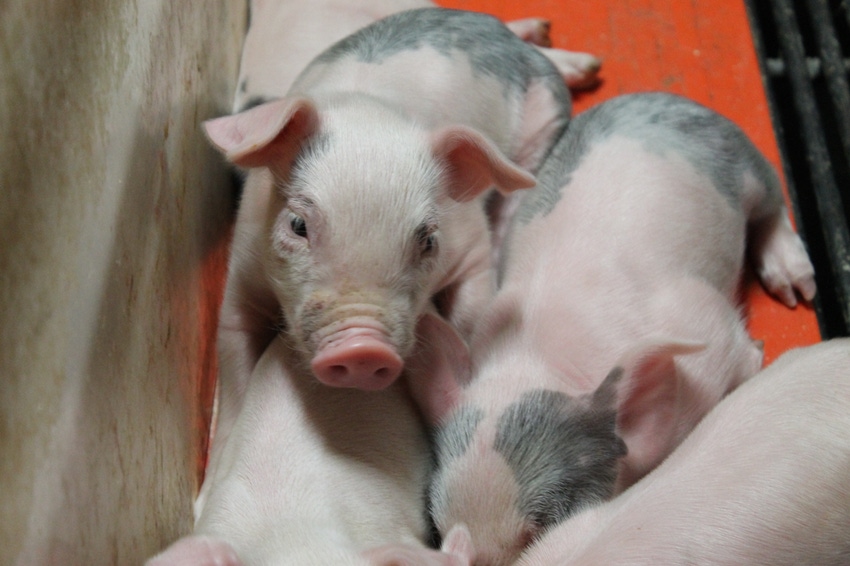Perseverance pays off in porcine sapovirus diagnosis
A calicivirus, PSaV, has historically been detected in pigs with and without diarrhea.

Tom Petznick calls it his “zebra” in pathogen discovery. Prior to a year ago, the virus wasn’t even on Will Fombelle’s differential diagnostic list. While the veterinarians initially thought coccidia when their clients presented them with cases of mid-to-late lactation piglet diarrhea, both decided to persevere and find the root of the cause.
Diagnostics led them to find they had cases of porcine sapovirus (PSaV) in their herds.
A calicivirus, PSaV, has historically been detected in pigs with and without diarrhea, according to the Swine Health Information Center. Co-infection with other enteric pathogens is common, although PSaV has been identified as the sole cause of diarrhea, as Petznick and Fombelle found in their outbreaks.
In the Nebraska herd Petznick works with, he not only found diarrhea in the 7-day-old pigs, but also reduced average daily gain, low mortality and variable morbidity, with 1.5 pounds of lost wean weight in some affected pigs. A practitioner with ArkCare in Omaha, Petznick describes the diarrhea as having a “gravy to toothpaste-like consistency” and being grey, yellow or yellow brownish in color.
“What prompted us to do an investigation is that we had done previous diagnostic work that commonly would show either very limited amount of rotavirus; could find no coccidiosis, and so kept getting lesions though that were similar to what you would see with rotavirus,” Petznick says. “And so, it was really put to the challenge by the owner to fix this. It was a very clean herd at the time, triple negative pigs. But then it just wasn't acceptable where we were at with wean weight."
Fombelle, a partner and veterinarian with Carthage Veterinary Services in Carthage, Illinois, also observed a “pudding” like consistency in his cases. The 12-day old pigs had rough hair and low mortality, and wean weights were challenged. He decided to put pencil to paper to show the cost of lost wean weight. Based on a common weight slide of 0.75/lb above or below 12 pounds, one pound of lost weight can equate to $0.75/pig in lost opportunity.
“If you take 75 cents a pig and you're weaning 12 pigs per sow, that's $9 a litter. And if that sow farrows two and a half times a year, that could be $22 a sow per year,” Fombelle says. “Not to say it's going to be that, but if we use a pound of wean weight that's the opportunity or the value proposition we have to go fix wean weight.”
With no treatment available for PSaV, both veterinarians turned to adding extra sanitation measures and providing feedback material, as well as working with prescription vaccine platforms to develop novel vaccine strategies for their affected clients. Petznick also continued to partner with state diagnostic laboratories to identify PSaV as the causative agent in numerous cases.
“We have solutions for all these things, but if we only adopt one solution and it turns out we had rotavirus and coccidia, but we put in PSaV vaccine, then we're going to be disappointed and we're going to think, well, did that even work? So, I think really the critical part is to be truly definitive and investigate fully and investigate often,” Petznick says.
“Kind of two ways to correlate, getting caught with the double reverse or the triple option and getting tricked in a football game, or in a military standpoint, you don't want to be so focused on the enemy in front of you that you get flanked and the troops were sent around and PSaV catches you from one side or coccidia catches from the other side when you're only focused on rotavirus and vice versa.”
Petznick will be recognized for his perseverance, use of scientific principles, collaboration and leadership on Sept. 18 at the Allen D. Leman Swine Conference in St. Paul as the 2023 Science in Practice award recipient.
About the Author(s)
You May Also Like





